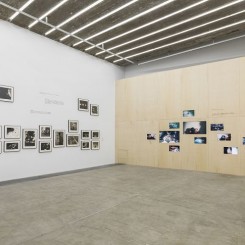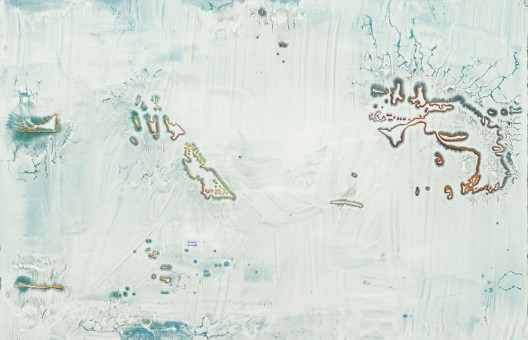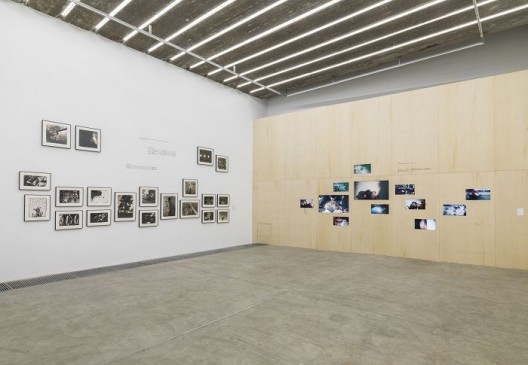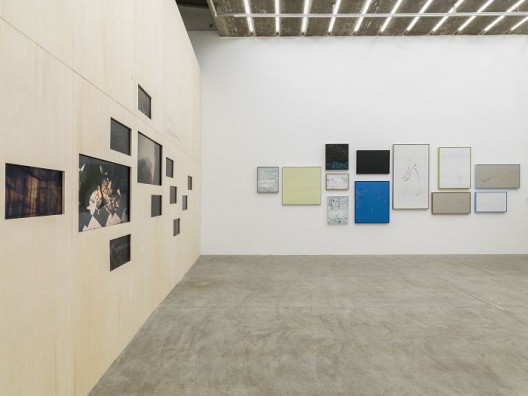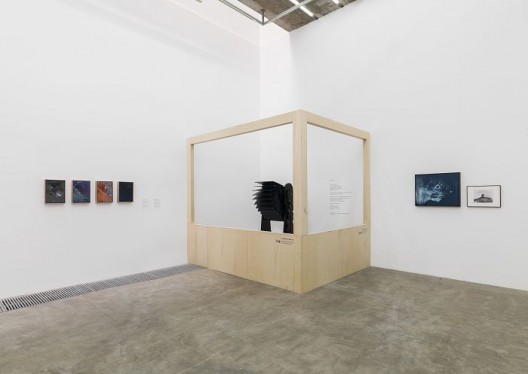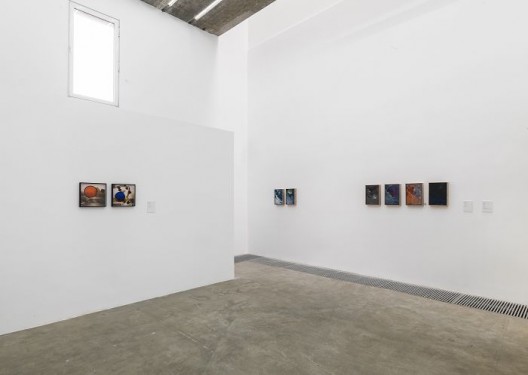Taikang Space (B2 Red No.1-B2, Caochangdi, Cuigezhuang, Chaoyang District, Beijing), Sep 8–Nov 12, 2016
How does a contemporary art exhibition realize its “existence” in a limited space and time? This question, in fact, contains a concealed premise: many exhibitions in China are not really “there”, even though they might occupy a certain time and space and have a list of objects and concepts: we only need look at the introductory texts and the description of the works to realize what they convey, and that the works are not really there. The exhibition site, in the truest sense, does not offer readymade concepts, fixed judgments, and determined conclusions. It is left open because it provides an unfamiliar visual experience, causes for divergent thinking, and a release from the habitual order of the imagined “site” full of potentialities. Below, I consider the example of artists Jiang Zhi and Chen Xiaoyun’s work in the collaborative exhibition “Love Addict” at Taikang Space in Beijing. In doing so, we can start to analyze how an exhibition comes to exist and how it might be read.
On the surface, this is an exhibition composed of a few dozen works of video, photography, painting, literary texts, and so on. But this is not merely an exhibition of a series of personal works by two separate artists. It is a carefully “generated” type of “site” that can be “read.” Why do I bring up the notions of “generation” and “reading”? Looking at the exhibition itself, whether at the works of Jiang Zhi or Chen Xiaoyun, they do not simply appear in juxtaposition, but have an internal logic of relations between them. Their various styles generate different voices around a common theme, which ultimately echo one another in the production of a “harmony” of sorts in the exhibition as a whole. Their works coexist and intersect in a shared space and respond to one another, particularly in the literature; both artists create fragments of texts, the shadows of which take shape and extend throughout the exhibition space. In doing so, their “harmony” can provoke a subtle empathy.
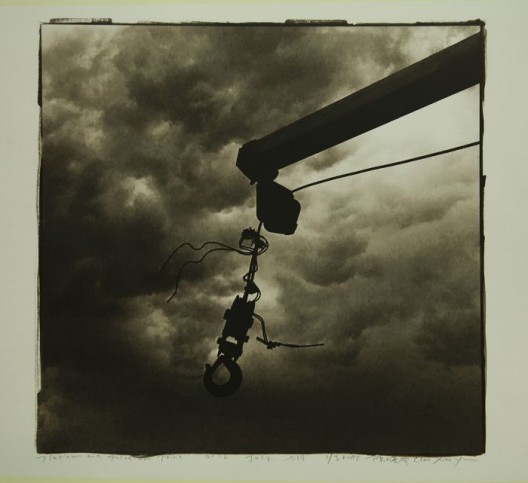
陈晓云,铂钯印相作品,20幅,尺寸不等,2016 / Chen Xiaoyun, Platinum and Palladium prints, 20 pieces with various dimensions , 2016
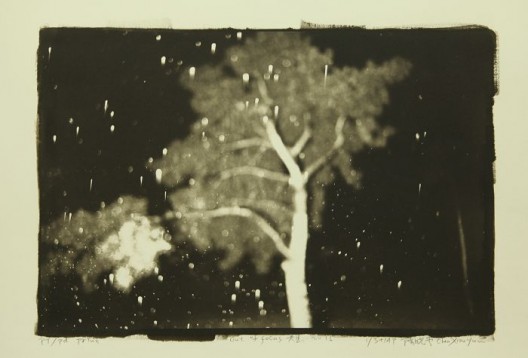
陈晓云,铂钯印相作品,20幅,尺寸不等,2016 / Chen Xiaoyun, Platinum and Palladium prints, 20 pieces with various dimensions , 2016
If we look at the text collaboratively produced by the two artists, Love Addict Book, as a point of departure or closure for the exhibition, we find that it is actually the exhibition’s most important pillar. It allows the exhibition to exist in tandem with a range of possibilities, with distinct choices that lead to various experiences of “reading” the exhibition. For instance, we can first look at the works in video and photography, and then at the Love Addict Book, followed by the paintings, installations, and wall text interspersed in between. The entire sequence can also be reversed. We can also look first at the fragmented texts on the walls, and then find the book, and finally view the various other types of works. We could even choose a random route to view the works. Yet regardless of how we see it, the Love Addict Book is a guiding force or key to unlocking the exhibition. In this book, Jiang Zhi and Chen Xiaoyun’s text becomes a work like the others in the exhibition, a juxtaposition of two styles, hot and cold, whether in terms of the structure or content, which interact subtly and turbulently, revealing a tacit dance.
In addition, when the textual excerpts spread across the expanse of the exhibition space, and when we see this book, we feel that if we imagine this exhibition as a dance, and view the texts as a dialogue in some sense, then all of the works can be seen as the props and backdrop of a piece of theater. If the texts were to appear as subtitles, then we could imagine a state of miming: Jiang Zhi’s is a kind of monologue, while Chen Xiaoyun’s is a mixed performance of insanity and idiocy. This theatrical way of being is one of the most important features of the exhibition. And obviously, with the range of different works and the book, the texts are mutually constitutive. They are more like two spaces on either side of a pendulum which swings by the power of human love and desire, thought and addiction, dream and fantasy, memory and imagination, pain and joy.

《作为一只鹦鹉如何与鹦鹉相处》,2分16秒,16:9,彩色有声,2014 / Jiang Zhi
, How to get along with a parrot as a parrot, video, color & sound 2’16″, 16:9, 2014

《印度火车上的风景以及脚》,1分35秒,16:9,彩色有声,2016 / Jiang Zhi , Indian Scenery Viewed on a Train, and a Foot 2016 video, color & sound 1’35″, 16:9
In his text, Jiang Zhi is restrained and moderate, yet in his visual works there lies a warmth hidden within the cold; Chen Xiaoyun’s techniques and topics shift dramatically in his writing, yet in his visual works there tends towards the cool. Although the two artists’ works are distinct in terms of their thought processes, methods, and styles, they reveal a commonality through their focus on love and desire, as the exhibition title “Love Addict” suggests. The title’s English translation actually reveals a great deal. “Addict” carries the meaning of “a person with an addiction” or “a crazed person,” and gives one a sense of the addicted, intoxicated, indulgent, wanton, habitual, and other tendencies. When these notions are placed alongside “love,” they naturally reflect the complex relationship between love and desire. The Chinese title, Lànqíng, which is closer to “lust” and is usually derogatory in meaning, tends to indicate a lack of control and a certain indulgence in relation to love and desire.
The works of the two artists in this exhibition—although not lacking in love, desire, and erotic content or implication—truly leave a deep impression on the viewer because of the ways in which the intimate world of love and desire is represented either directly or indirectly. Though the works that comprise the exhibition are spread wide open, the context remains closed-off and private. It is precisely in this private sense of being closed off that it becomes difficult to enter this open state. Common moral judgments of “lust” in the outside world can provoke a person to act out of veiled sarcasm, making this exhibition like a sharp probe that can penetrate the audience’s vision.
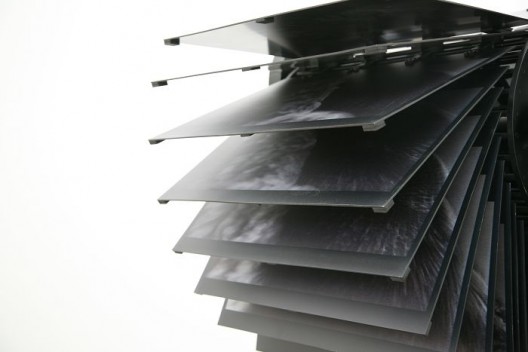
蒋志,《深吻》,装置(铸钢,电机,齿轮,铝板上打印照片,诗歌等),尺寸可变,2016 / Jiang Zhi , Soul Kiss, Installation, Cast steel, motor, gears, aluminum panels printed with photos and texts, Dimension variable, 2016
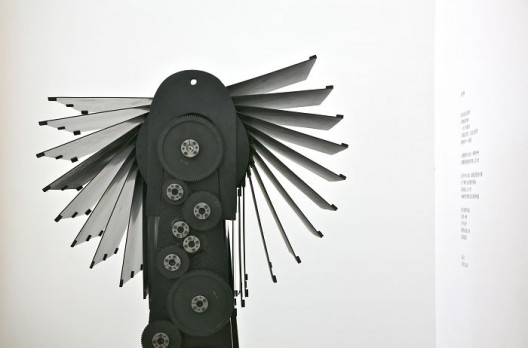
蒋志,《深吻》,装置(铸钢,电机,齿轮,铝板上打印照片,诗歌等),尺寸可变,2016 / Jiang Zhi , Soul Kiss, Installation, Cast steel, motor, gears, aluminum panels printed with photos and texts, Dimension variable, 2016
The view of “lust” in this exhibition is in large part one of self-indulgence and loneliness. Regardless of how you read the exhibition—in terms of where you begin and end—to use words from one of Jiang Zhi’s works, “The World is Yours, Also Ours.” From the perspective of the two artists, the “site” in this exhibition, although completely open to everyone in terms of space, on the surface, satisfies the idea of “the world is yours”; however, if we take note of the source of this expression from Quotations of Chairman Mao, “The world is yours, as well as ours, but in the final analysis, it is yours,” we can see that Jiang Zhi interprets this phrase out of context, which is actually quite profound. That is also to say, if the audience cannot crack the meaning of the exhibition, then the body is left on the scene, still divided between two worlds; they cannot be there at the site. From the perspective of the two artists, “You have your world, we have ours, and here, this is our world.” Only when the audience understands the meaning behind the exhibition can the world before their eyes truly suggest that “the final analysis is yours.” If such an understanding arises, then the mission of the two artists has been achieved, and they will return to their own respective worlds.
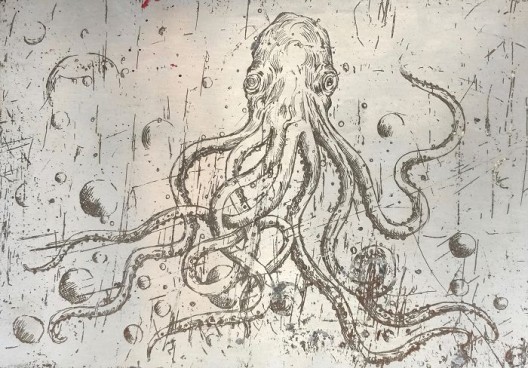
陈晓云,锌板腐蚀绘画作品,21幅,尺寸不等,2016 / Chen Xiaoyun , Zinc etching plates, 21 pieces with various dimensions, 2016
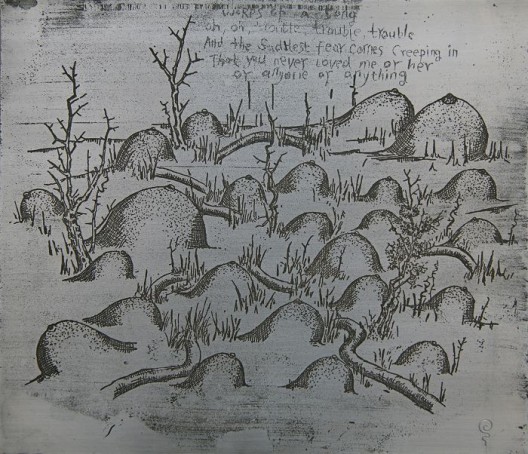
陈晓云,锌板腐蚀绘画作品,21幅,尺寸不等,2016 / Chen Xiaoyun , Zinc etching plates, 21 pieces with various dimensions, 2016

蒋志,世界是你们的也是我们的 E系列,油画,12幅,尺幅不等,2014至2015 / Jiang Zhi, The World Is Yours, as Well as Ours, Painting, 12 pieces with various dimensions, 2014-2015
